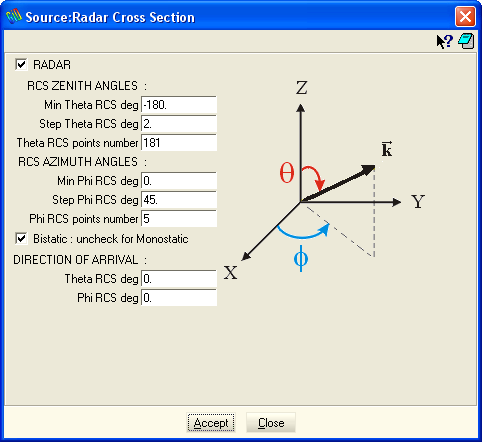![]()
Select the « Radar Cross Section» (RCS) check button and define the directions of observation. Then click on "Accept".

There is no need to define a plane wave to compute a RCS. In the case of the monostatic RCS, ICARE will automatically create a plane wave for each direction of incidence/observation. In fact, this tool is more than an output definition. It is a kind of "meta tool" combining simpler tools (plane wave and far field).
For a monostatic RCS, ICARE will compute a distribution of currents for each direction of incidence. Each distribution will be store and available for 3D visualization during the post processing. However, for large problems with a lot of directions of incidence, the number of results can be huge and the size of the output file could slow down the computation. To avoid this drawback, it is possible to store only one distribution of currents, by using the check button "Limit surface currents outputs...".
In the case of bistatic RCS (use the check button "Bistatic : uncheck for Monostatic"), the user must define the direction of arrival of the incoming plane wave :

Note : Only one kind of source must be selected : Plane wave, Source Point, Radar Cross Section, Voltage Source or Wave Guide. If you select a Radar Cross Section computation, other selected sources will be disabled. A warning will be displayed.
Copyright © 2015, IEEA